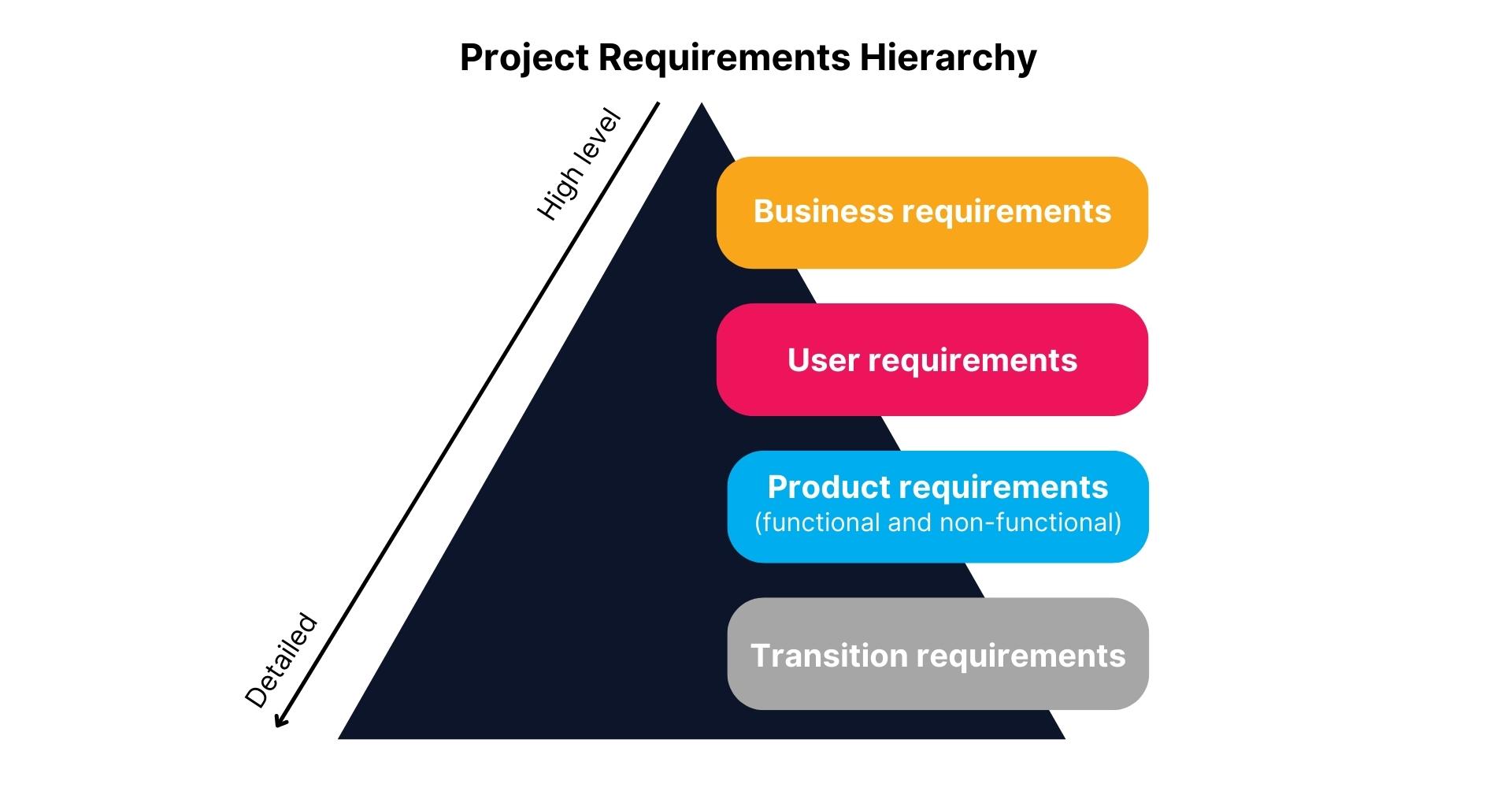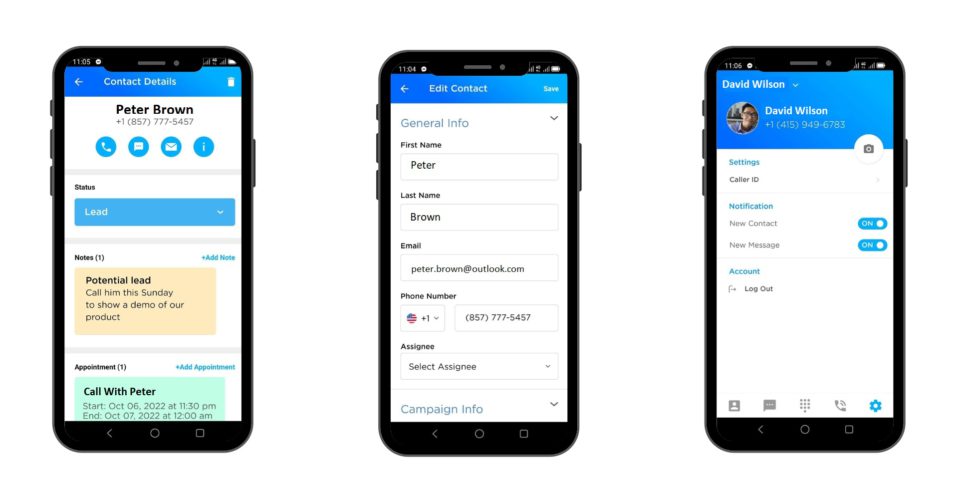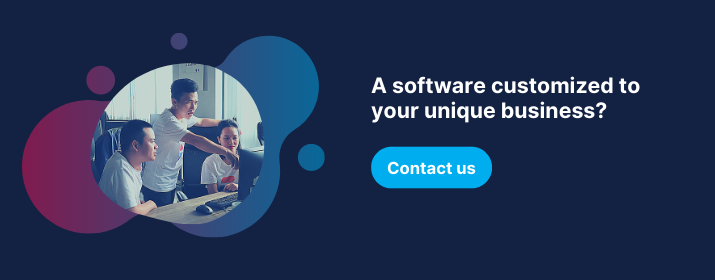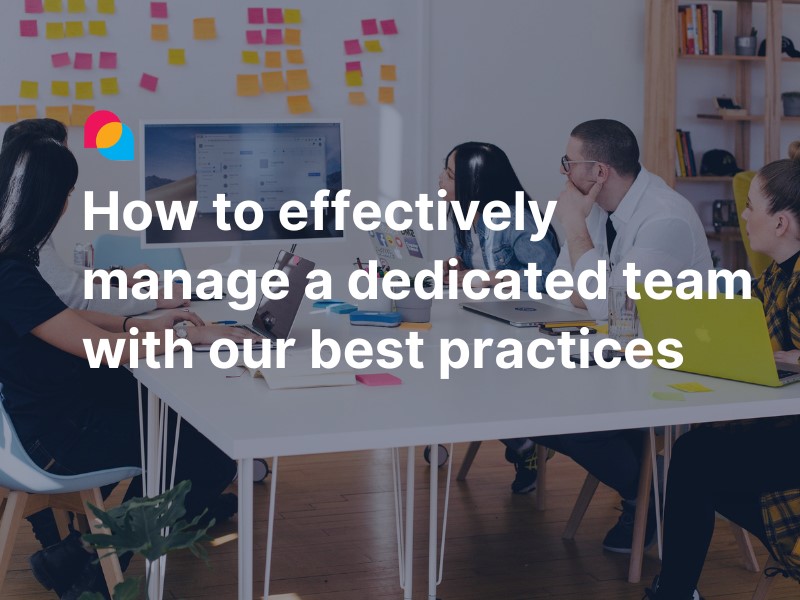Over the years, more and more businesses have caught the IT outsourcing wave. According to Statista data, the revenue of the outsourcing industry was estimated to reach $351 billion US dollars in 2021. The size of the worldwide IT professional services market was estimated at USD 777.28 billion in 2021, and it is projected to increase at a CAGR of 11.2% from 2022 to 2030 (Grand View Research).
Not every organization has employees specialized in IT, so they frequently hire such specialists from outside. But how can you increase your potential with a third-party talent and reduce overall costs while maintaining the same high-quality product?
In this article, we will answer that question and focus more on tactics that help you efficiently set up a dedicated team tailored to your project. As well-known examples of companies that successfully outsourced their projects using the dedicated team approach, WhatsApp and Alibaba come to mind. With more than nine years of working in the offshore software industry, we have accompanied many clients to create digital solutions. We also take this chance to share how Enlab has helped our client, a start-up in the US, set up a dedicated team with Enlab since 2019 and shipped their MVP to the market within two months.
An overview of the dedicated team model
A dedicated team model is a type of collaboration model in which you bring an idea to the table. Your software partner helps you shape it, advise on the right tech stack, provide talents, and coordinate development. The team members can work alongside your company staff to develop software of the highest quality and let you solve your business challenges as well as attain your business goals.
When is the dedicated team model a good choice?
The dedicated team model is an ideal fit for various projects, given its flexibility and scalability. Yet, you shouldn't see it as a one-size-fits-all solution. This model works best in the following cases:
- The project is complicated, broad scope, or long-term.
- You're looking for flexibility in changes in requirements, objectives, scope, and skills needed.
- Projects with tight deadlines; meanwhile, you can't get the right team on board quickly and speed up them to meet the requirements of the role and project.
- Your in-house team has no clear-cut project expertise and experience at hand, especially a one-time tech project.
- You want to develop an MVP to test early adopters, attract investors or expand to new markets.
- You can't afford to hire the necessary professionals due to cost.
- The in-house team is engaged in other development projects and cannot take on any more workload.
- You experience a shortage of tech talents on-site on the domestic market.
The composition of a dedicated team
Depending on your product's development stage, the specific composition of your team can vary. Below are some specialists that your development team can consist of:
- Developers (front-end, back-end, mobile, full-stack)
- Quality assurance engineers
- Business analysts
- Solution architects
- Project managers
- UX/UI designers
- DevOps engineers
At Enlab, we provide a dedicated team tailored to your project and unique business requirements.
3 types of hiring dedicated developer models
When it comes to hiring dedicated developers, there are three main types: staff augmentation, managed teams, and project-based outsourcing. Let's take a look at the comparison table for these models.
| Staff Augmentation | Managed Team | Project-Based | |
| Description |
You utilize a team of outside personnel to augment your organization's capabilities in the short term.
|
You and your outsourcing partner share ownership, risks, and responsibility for project direction, deliverables, and final outputs.
|
Your outsourcing partner oversees and manages the whole software development process in order to deliver the finished product to your requirements and on schedule.
|
| Scope | Not set | Estimated | Predefined |
| Timeline | Predefined | Estimated | Predefined |
| Client’s control | High | Medium | Low |
| Client technical expertise/ leadership | Required | Recommended | Optional |
| Communication with the outsourced team | Daily | Frequent | Occasional |
| Overlap with an in-house team | High | Some | None |
| Product management | Client | Shared | Client |
| Task management | Client | Outsourcing provider | Outsourcing provider |
Read also: How to choose the best pricing models for software outsourcing projects.
How to set up a dedicated software development team successfully
Building up a dedicated development team involves the perfect combination of roles, talent, skill sets, and working environment. Let's look at the strategies in the following step-by-step guide to see what's behind the dedicated team model.
Step 1. Think out your product strategy and project requirements
Before you hire a software development team, you can start by setting goals, budgets, and requirements for your project. However, one critical thing to think about is your product strategy. A product strategy often responds to three key questions:
- What do you sell? (product/service)
- Who do you sell it to? (market)
- How do you know if you will sell it successfully? (goals that are converted into product metrics)
Following this strategy, you can define the critical features that should be a priority in building in advance and less important features to meet the demands of users and your business. Your partner can focus on what brings the most value to your product and manage project resources more effectively.
For instance, processing payments may be challenging if you are a fast-growing online store. A cutting-edge platform for processing payments may be your solution. Thus, you would need a dedicated team to develop a custom app or integrate a ready-made solution.
As stated in the BABOK (Business Analysis Body of Knowledge) guide, project requirements can be categorized as follows.

When your project scope hasn't been defined clearly, you can outline the high-level requirements for your product, including
- Business requirements (e.g., business goals, objectives, and needs);
- User requirements (what the user needs the product to do);
- Product requirements (functional and non-functional ones).
- Transition requirements (how the product transitions from the current state to the future).
This gives your development team an overview of the project and the features to be completed. Then, you and your development team can plan sprints that break software features and low-level requirements into iterations and ongoing develop your solution.
You need to know from the beginning what you want to get in the end to avoid going through extra difficulties with your dedicated team later. If you don't have technical expertise, don't worry. You should go ahead to the next step: find a reliable software development company that will consult and provide you with a dedicated team.
Step 2. Choose a reliable outsourcing development vendor
Once your requirements are clear, select your outsourcing partner and present your business idea and strategy to them. When seeking a software development vendor, pay attention to reviews and ratings on various platforms, such as Clutch.co, GoodFirms, and many others. To find the optimal partner, don't allow the quality trade-off by choosing a low-cost option. This can cause poorly written codes, technical debt, project delays, and inefficient workday lap. It's worth conducting in-depth research and scheduling a meeting with your vendors to learn more about their previous projects, relevant business verticals, and technical expertise.
At this stage, you need to screen the following information:
- How your vendor comprehends your business goals and analyses project requirements.
- How they show acumen in capturing and solving problems.
- Their expertise/experience in your business vertical/ product.
- How they are transparent and clear in working processes, data security, communication, and many more.
- Legal details, like a Non-Disclosure Agreement (NDA), a Service Level Agreement (SLA), and a Statement of Work (SOW)...
Your vendor will already have an idea of what you need within your dedicated team, and it will be quicker for them to align with your business needs. Since then, they will give you a comprehensive proposal about your project. If you agree upon the proposal and negotiate the contract successfully, you will move on to the next step.
Read also:
- Effective Software Outsourcing Screening Agenda for SMEs and Startups
- Best countries for outsourcing software development
- Key numbers to look at when outsourcing software development in Vietnam
- 14 Insights into Vietnam Outsourcing Software Development
Step 3: Assemble a potential team
In this stage, you can screen a list of candidates from your vendor and interview them on your own. It lets you find out not only the team's experience but also their personality and attitude. At the same time, you involve setting up working rules and culture with your team to ensure you have the right members you need.
You need to check the candidates' hard and soft skills during the interview. Asking the right questions can help you understand whether this candidate is right for your project. You also can prepare some technical tasks related to hard skills, such as fixing errors in a piece of code or offering algorithms to solve a particular problem. This might not be a problem if you have a technical background. In addition, to cooperate with the team efficiently, the candidate should have good soft skills, such as great communication skills, open-mindedness, and teamwork. You can extend this list with such soft skills as self-management, critical thinking, creativity, the ability to work under tight deadlines, stress resilience, and so on that you believe are necessary for your team. After all, you are the one who most understands the types of people who would naturally fit into your team.
Step 4. Transfer knowledge about your project or business logic
In this stage, you need to organize a few sessions where you can introduce remote specialists to your in-house team, tell your dedicated team what you expect from them, transfer your business logic, and explain how your corporate software works.
A well-planned process of knowledge transfer in software development helps you avoid project disruptions and keep knowledge within the team, despite employee rotation. So, you need to define people who transfer and receive knowledge:
- Organizational level – Delivery managers, engagement, legal, and many others;
- Team level – CTO, technical lead, project managers, etc.
- From expert to expert – Software developers, QA engineers, UX/UI designers, DevOps engineers, etc.
Then, choose suitable knowledge transfer methods, like documentation, QA sessions, mentoring, and others. Besides, it’s essential to know who is in charge of the main contact point for the project and agree on tools for communication, project management, and development. The transferring and onboarding process will be fast and easy, letting you focus on other goals.
Step 5: Define backlog for project or milestones
It’s time to define the product backlog and sprint backlog before running sprint delivery.

An organized list of work items or features that enable you to achieve product goals and set expectations among teams is referred to as a product backlog. The tasks on it are not set in stone, so your dedicated team can evaluate and classify them by order of importance before determining which tasks to undertake first. With an efficient product backlog plan, your development team runs like a well-oiled machine when your PM can assign developers daily, weekly, or monthly tasks. This helps you enhance efficiency, encourage collaboration, and hit goals easier.
Meanwhile, a sprint backlog is known as a list of work items that your development team plans to accomplish at the end of each sprint. These items are often taken from the product backlog in the sprint planning meetings. A clear sprint backlog reduces scope creep by identifying exactly what your team will be doing and not doing during each sprint. The result is delivered to the clients, which should be solution functional, well-integrated, and tested so that everyone can give feedback. Sprints make projects more manageable, enable teams to ship high-quality work faster and more frequently, and give them more flexibility to adapt to change.
These backlogs are crucial as they function as a transparent document that keeps all of you, your team members, and stakeholders updated about the development process and the product. Besides, with the Agile methodology, you can actively participate in the development progress to ensure everything is on track and gets the best possible result.
How our client leveraged the dedicated team model to build their MVP within 2 months
Our client, a startup in the US, came to us looking for comprehensive support in building a performant MVP for their marketing automation platform within 2 months. This solution makes it easier for marketers to acquire customers, build loyalty, improve brand reputation, and streamline communication with customers in one place. After releasing the MVP, they would develop it into a full-fledged product with critical and advanced features.
Phase 1: Discovery
Not only did our client want to create a digital solution with high-quality code, but also, the team could clearly understand the product and the business vertical. And the marketing automation domain involves complex business rules and advanced features. Therefore, it requires ongoing development with different developers' skills, like design systems thinking, databases, and third-party integrations, to name a few.
Based on our consultation, our client chose a dedicated team model for their project due to the following reasons:
- They wanted to develop and release a working MVP as fast as possible within two months.
- They required us to quickly build a team with experienced engineers, only focusing on their project.
- The project is complicated with broad scope and long-term.
- The finished product needs to be continuously developed, improved, changed, or scaled.
- Our client can quickly scale up or down their team to align with their business strategy.
Hiring a dedicated team of required expertise and skills ready to jump into their project means they didn't need to waste time training the greenhorns. The development team could kick off the implementation of the project in no time. In such a way, as a startup founder, our client will save their funds and time while receiving a high-quality MVP.
Our client had time for review and approval when receiving our software specifications and architecture documents. We would be willing to explain all the subtilities of such implementation to non-tech clients. When everyone is on the same page, we can sign contracts and onboard the team to kick-start the project.
Phase 2: Team setup
We knew that to explore it through and through, as well as deliver a scalable and powerful solution, we had to assemble a cross-functional team. Our client would invest in developing a product long-term, so we recommended our client start with a basic team structure with an extensive set of relevant skills from the get-go:
- Front-end developers
- Back-end developers
- A project manager
- A business analyst
- A UI/UX designer
- A QA engineer
If necessary, they can hire more specialists to fill the gaps and achieve the desired velocity later. Such a strategy can reduce onboarding time by introducing new specialists only for specific concerns, such as DevOps, solution architects, or customer support. It’s advised that the team members come from the same company or companies in the same time zone for the best cooperation.
Phase 3: How to build and release the MVP within 2 months
The challenges:
a. A tight deadline to build and release a simple yet functional MVP to the market within two months.
Solution:
- We decided on the most suitable tools, frameworks, and technologies, built the roadmap, and set up the team in less than two weeks.
- To ensure effective project management and on-time results, we applied the Agile methodology during the project. It enables our client to reduce risks, increase team transparency, and give them predictable project velocity.
- We also utilized a variety of communication platforms and services, including Slack, Loom, Google Meets, and emails, to better communicate and keep the customer abreast of the progress of the work.
- Before post-launch, we tracked app performance for our client and provided ongoing support to ensure the product satisfied their needs.
b. Our client had worried a lot about cybersecurity and security flaws in their system when more than 16 billion personal records were leaked in 2019.
Solution: Instead of architecting the solution, as usual, we leveraged AWS system architecture to build databases to protect business and customer-sensitive data. One great advantage of cloud technologies is that it enables our client to scale while maintaining a secure environment with superior visibility and control. Developing cloud-based applications also helps them save expenses without managing physical servers or storage devices.
The results: After two months, with a team totally focused on the project, we successfully released the web app's first version. This helped our client get over 100 accounts (tenants) several weeks later.

Read more about how we built an MVP for custom marketing automation.

Read the full client testimonial on Clutch.
Phase 4: Ramp up the dedicated team and run ongoing projects
To increase the project's progression pace and cut off unnecessary costs, it's critical to look for a dedicated software development team model that allows you to scale or reduce resources as needed. It could be after an MVP launch, expanding to a new market, or due to a sudden increase in your product's user base.
Depending on the exact requirements, we either offer available resources onboard or conduct interviews and recruit new talent specifically for the project. In this project, our client scaled up their team and shifted their focus towards developing mobile apps, improving existing web features, and extending the app with additional functionalities. The onboarding process of new members often occurs within 1 week. In the case of downscaling, after agreeing on two parties, we can quickly decrease the team's size without affecting the project's progress.
The dedicated development team model allows our client to adapt quickly, finding them the right specialist to get their project on track as fast as possible. When issues arise, or they want to add/update features to fit their business goals and strategies, our development team is always ready to respond to adjustments promptly. The team also gets involved in the product development process, from ideation, design, and technical solutions,... to creating the most high-quality products. By leveraging offshore outsourcing with the dedicated team model, our client can save costs up to 50% instead of hiring local developers with equivalent skills and expertise.

Now, the mobile app is available on Google Play and the Apple App Store. We're building key advanced features to adapt them even better to the users' needs and expectations. Our client often pays a visit to our office to meet the development team in person and foster more collaboration.
Final thoughts,
“Do what you do best and outsource the rest!” — Peter Drucker.
IT outsourcing is an undeniably advantageous and cost-effective business approach. So, what drives organizations to take consideration into outsourcing as part of their business strategy? Increased capacity, accomplishing larger business goals, accessing skills not available in-house, and cost savings.
Hiring a skilled, dedicated team has become a common solution in outsourcing for many startups, SMEs, and large corporations. It enables organizations to significantly reduce development expenses while maintaining complete control over all ongoing project processes. If you opt for a dedicated team model, you can expect that the software engineers you collaborate with will focus on your project at a time. This commits to maximizing the team's productivity and creating working products without scarifying the quality. You can't find this advantage in other models like Time & Materials or Fixed Price.
A dedicated team is a reasonable choice if your project is designed to stay in continuous production to come and is planned to expand in the future. You also can take advantage of market dynamics in other parts of the world to outsource world-class development services at attractive prices. With a seasoned and trusted outsourcing company, they can share your goals and vision as well as help you find the right business direct.
We hope this article helps you have a better idea of what dedicated teams are and how to set up a dedicated team efficiently.




